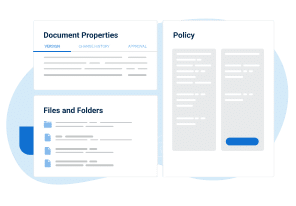Environmental Aspects are the ways that the processes of a company interact with the environment around it. Thought should be given to the aspects that can be controlled directly, as well as those that can only be influenced. Although there is no single correct approach on how to identify these, Appendix A of ISO 14001 provides some categories to consider when you are trying to identify the environmental aspects of your activities.
Here are the categories and some examples of aspects to consider:
Emissions to Air
- Smoke stacks that expel exhaust from furnaces
- Vented fume hoods that release chemicals outside of the building
- Exhaust from delivery vehicles
- Exhaust from supplier delivery vehicles (influence by choice of supplier closer to facilities?)
- Areas with risk of fire that will expel pollutants into the air
Releases to Water
- Waste chemicals that are expelled into the sewage system
- Uncontained spills that may leak to nearby rivers or ponds
- Uncontained spills that can drain into road storm sewer systems
- Rinsing of laboratory glassware (e.g. test tubes, pipettes) in sinks leading to sewage system
Releases to Land
- Uncontained spills that may contaminate land near facilities
- Waste products that could contaminate landfill sites
- Dumping of waste products on land near facility (such as an area designated for collection of waste that is unprotected and spills into nearby lands)
Use of Raw Material and Natural Resources
- Usage of chemicals (such as Chlorine gas, alcohol for cleaning or rare helium)
- Usage of water for processing
- Usage of metals for machining
- Usage of cleaning agent (such as detergents or de-greaser products)
Use of Energy
- Electricity usage for machinery, computers & lighting
- Natural Gas usage for heat or furnaces
- Diesel for delivery trucks
Energy Emitted
- Heat energy from facilities that affects the area around the facilities
- Radiation energy that could affect animals and birds flying near the emitter
- Vibration energy that could affect flora or fauna (such as large machines that shake the ground)
Waste and By-products
- Waste paper from offices
- Waste plastic from packaging
- Hazardous chemical waste (both in chemical form and materials contaminated with chemicals such as filters from a vent hood)
- Waste metal from machining
- Scrap products and their constituent parts
- Materials produced during production that are not the main deliverable product
- Computers & hardware at the end of its life
- Disposal of cleaning agent (such as detergents or de-greaser products)
Physical Attributes
- Size of facility such as proximity to wildlife
- Shape of facilities (do you have unused space due to your facility shape)
- Color/ Appearance of your building that could affect wildlife (such as large glass windows that could be hit by birds)
To implement ISO 14001 easily and efficiently, use our ISO 14001 Premium Documentation Toolkit that provides step-by-step guidance and all documents for full ISO 14001 compliance.

 Mark Hammar
Mark Hammar 



